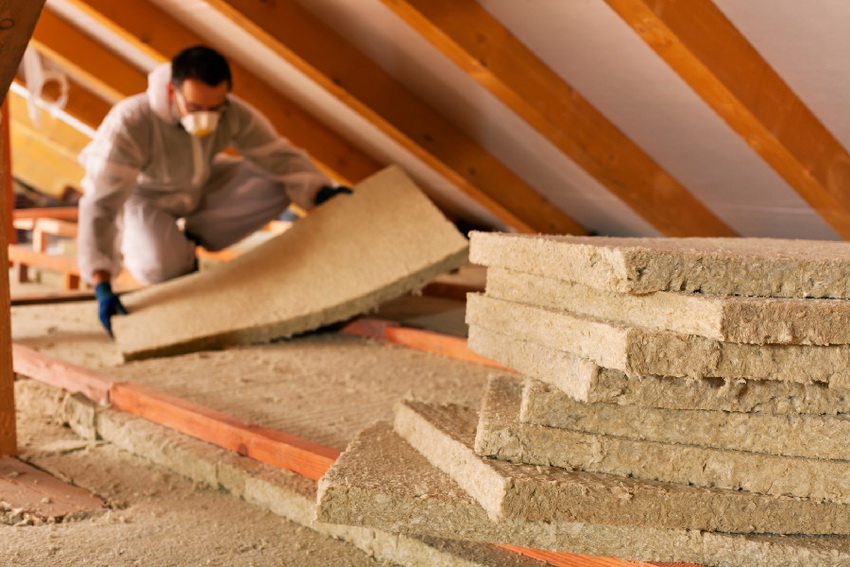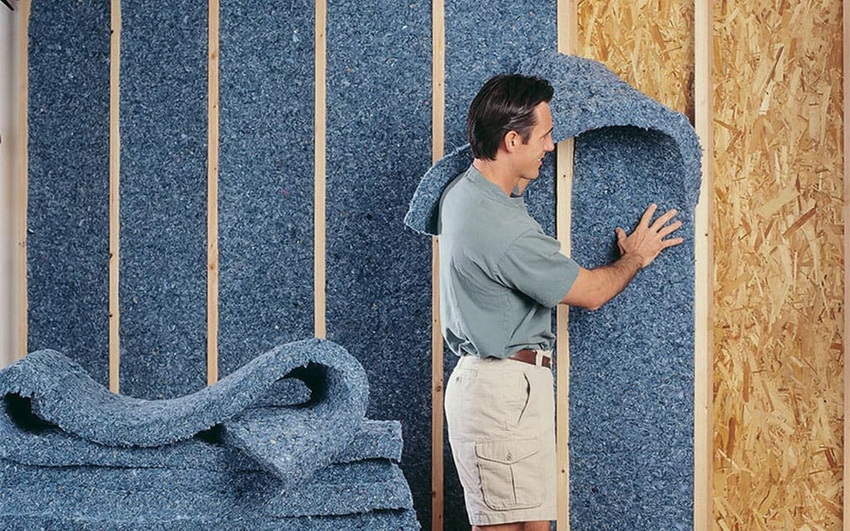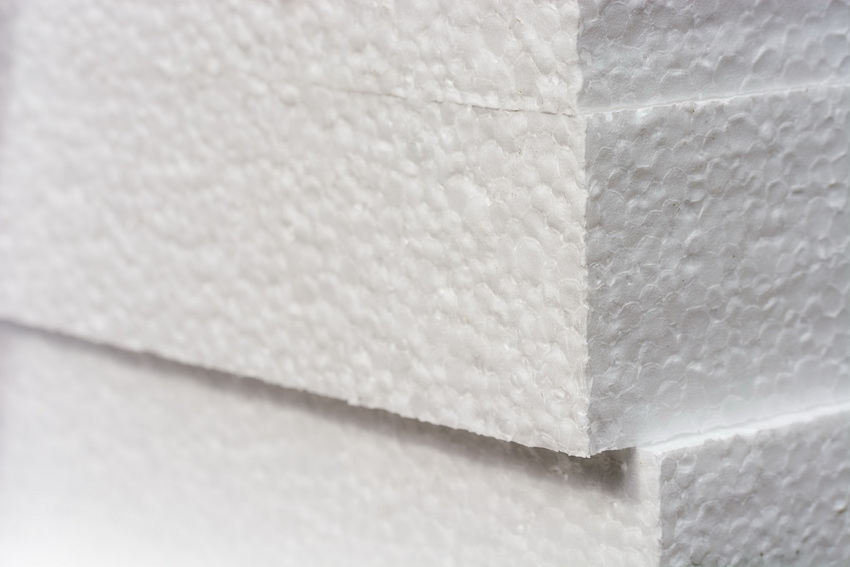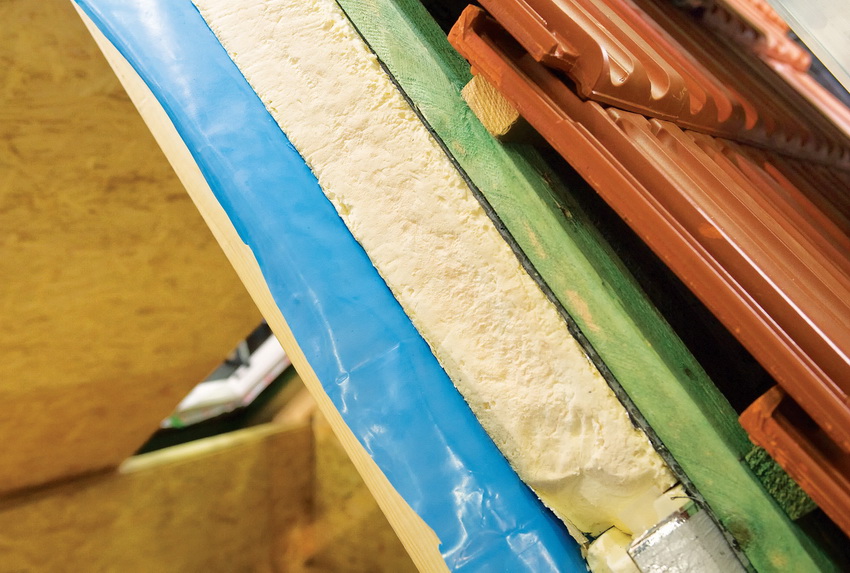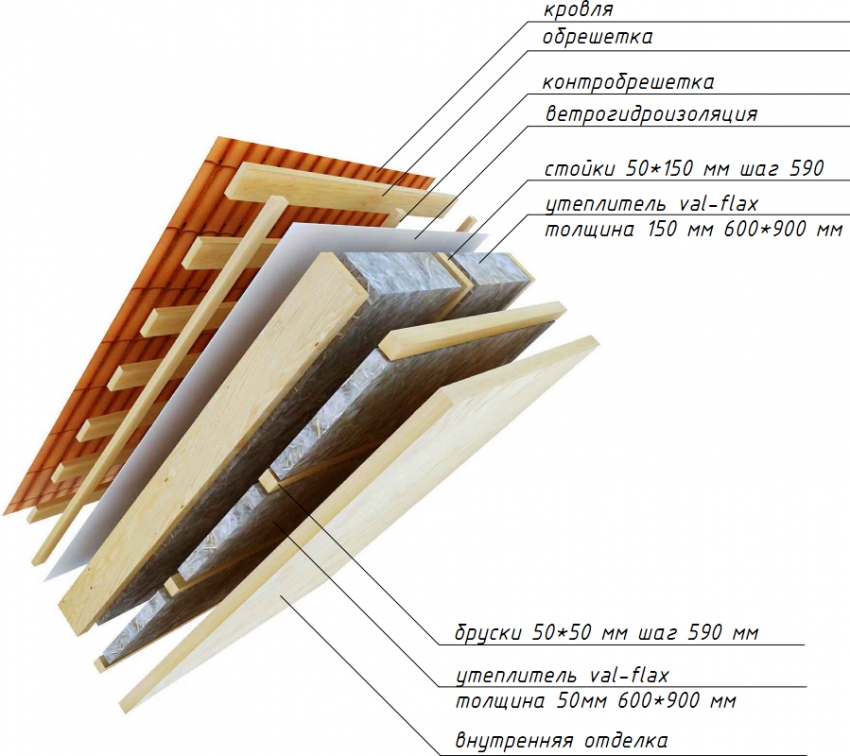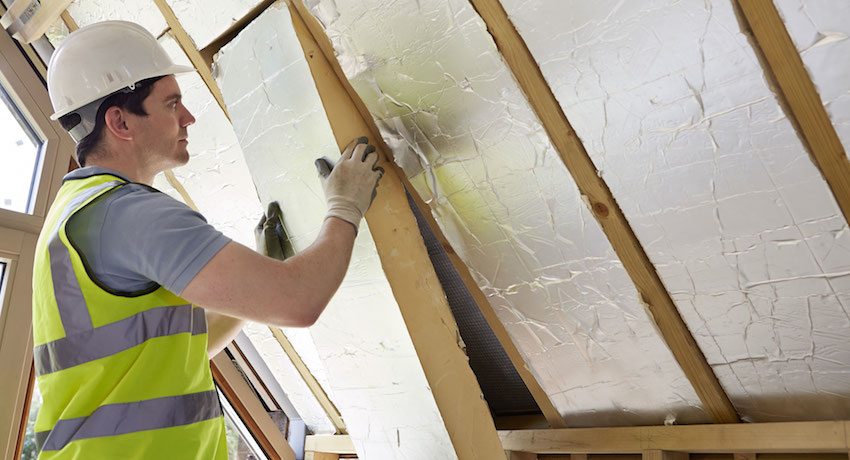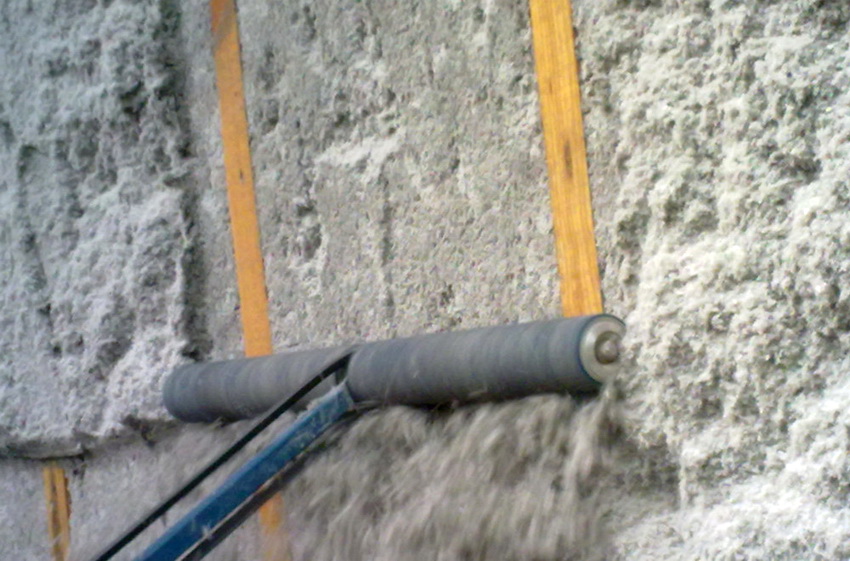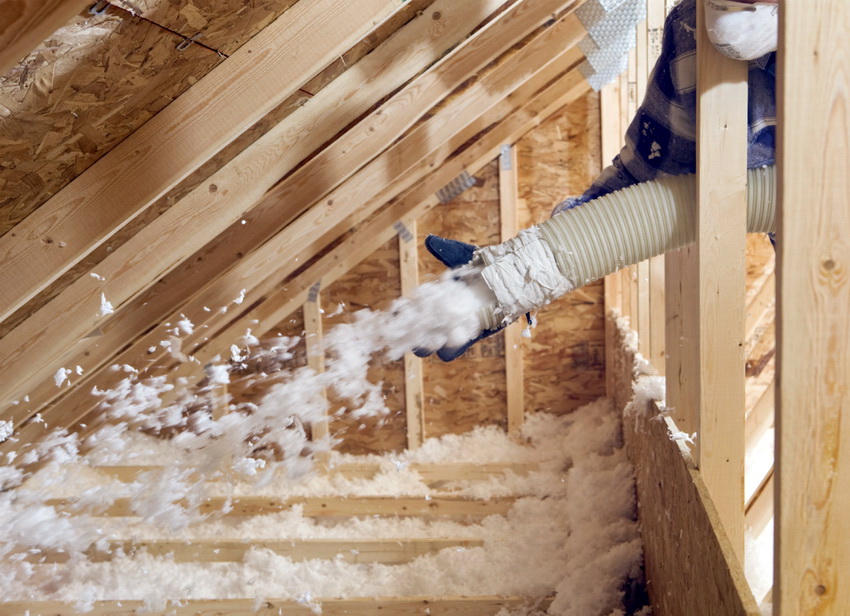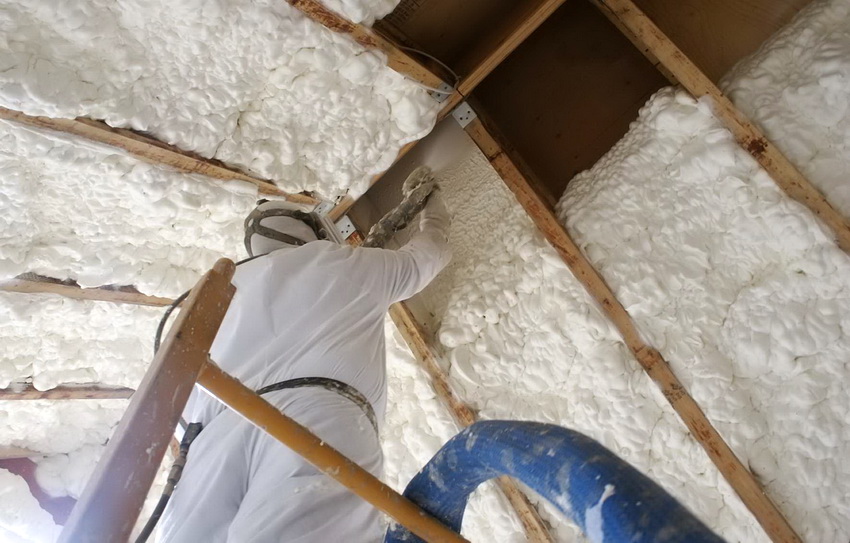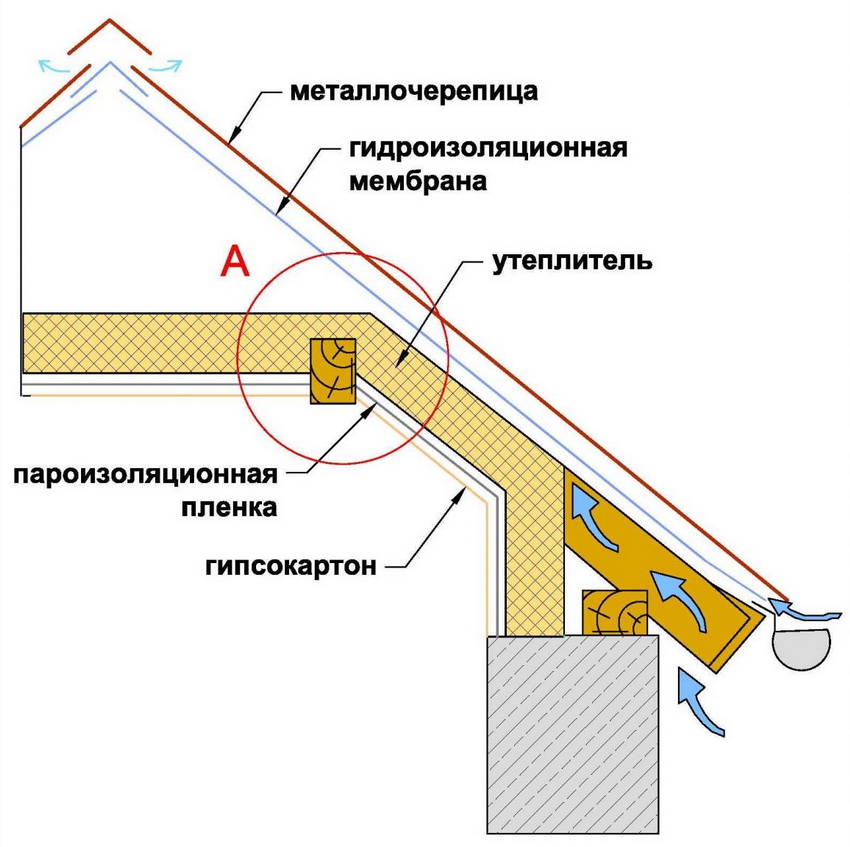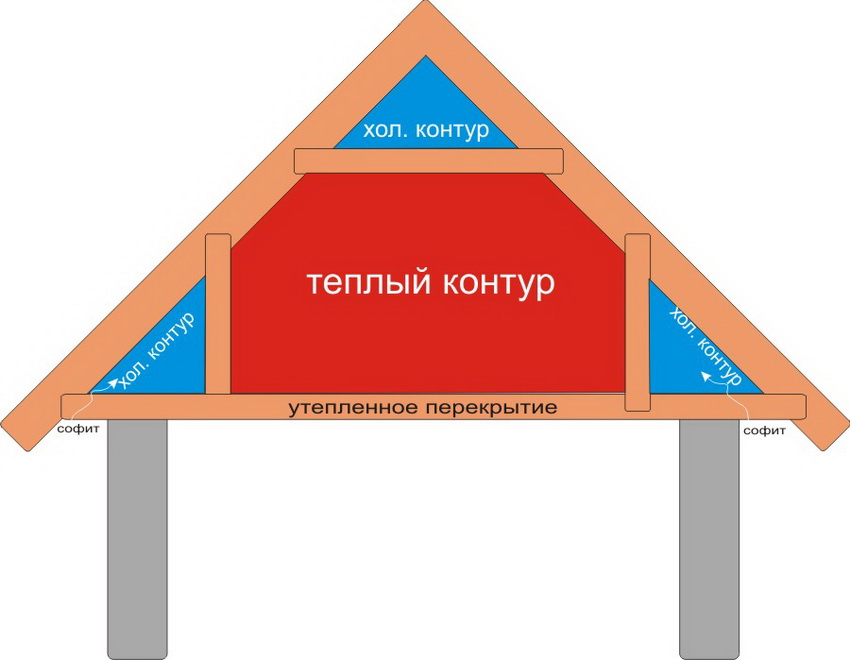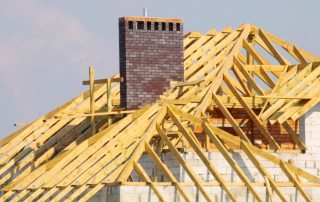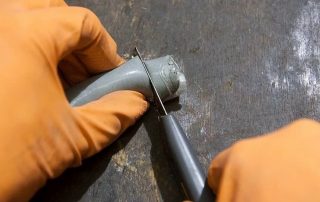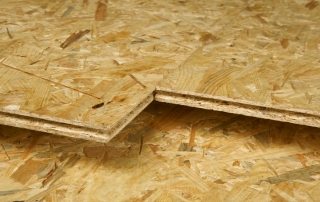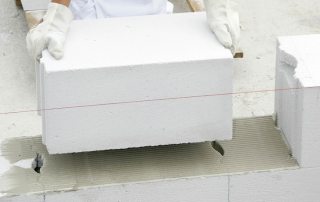Arrangement of living space in place of the attic space has long ceased to be a rare phenomenon. More and more home owners are interested in how to properly carry out repairs so that life “under the roof” is no less comfortable than in the house itself. Consider how to make the attic insulation, if the roof is already covered, what materials are best suited for this purpose and what nuances you should pay attention to.
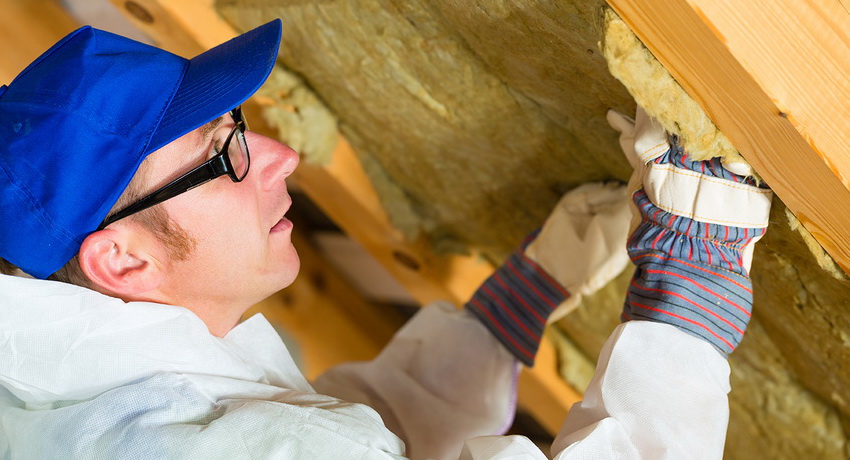
When arranging an attic, insulation is the main point, since the roof is considered one of the coldest areas of the building.
Content
- 1 Insulation of the attic from the inside, if the roof is already covered: preparation of the room
- 2 The best materials for do-it-yourself attic insulation
- 2.1 Insulation of the attic with foam: the pros and cons of the material
- 2.2 Attic insulation with expanded polystyrene: advantages, disadvantages and features
- 2.3 Insulation of the attic from the inside with mineral wool: a worthy alternative to penoplex
- 2.4 Insulation of the roof from the inside with glass wool: is it worth using this material
- 2.5 Insulation of the attic roof from the inside with your own hands using stone wool
- 2.6 Warming the attic with ecowool is one of the most effective ways to combat the cold
- 2.7 Attic insulation with polyurethane foam: technology basics and material features
- 2.8 Insulation of the attic from the inside with your own hands using penofol
- 3 Do-it-yourself attic insulation from the inside: video and stages of work
- 4 The main mistakes made in the process of warming the attic
- 5 Insulation of the attic from the inside with mineral wool with your own hands: video instruction
Insulation of the attic from the inside, if the roof is already covered: preparation of the room
The attic is not just a habitable attic. There are some rules that distinguish these two rooms from each other. First of all, the roof of the attic must necessarily have a slope. In addition, the height of the room established by the norm must be at least 2.5 m.
Focusing on an attractive appearance, many decide on the arrangement of the attic. But in reality, you have to deal with some nuances, which it is advisable to get acquainted with before starting work:
- the materials that were used for the construction of the attic directly determine the further heat loss in this room. Therefore, their choice should be approached very responsibly;
- Correctly selected engineering solutions, which make it possible to provide all the necessary communications on the upper floor, have no less influence;
- the shape of the roof plays an essential role. It can be pitched, gable or broken;
- in order to hide the load-bearing elements of the roof, you have to show imagination;
- the attic can be located not only on the territory of the house, but also go beyond it, relying on the columns.
Each of these aspects has its own impact on the approach that will be required for high-quality roof insulation. But the main role still belongs to two main materials - heat and waterproofing. On the one hand, the space under the roof is in the coldest area of the building. On the other hand, a strong difference between the temperature inside and outside often causes condensation, which has a destructive effect on materials.
The best materials for do-it-yourself attic insulation
For internal attic insulation, there are many suitable options. But your choice must be made based on the characteristics of the region of residence, as well as the design features of the particular roof with which to work. Let's consider what options exist today and what features are typical for them.
Insulation of the attic with foam: the pros and cons of the material
Polyfoam is one of the most famous insulation materials, which occupies its own niche among inexpensive thermal insulation materials. Its price is indeed significantly lower than that of many others, but this is far from its only advantage:
- the foam does not absorb moisture at all. If the material is pre-treated with a specially designed impregnation, then the water will simply flow down the surface;
- low weight - another advantage, which greatly facilitates transportation and installation, and also reduces the load on the roof;
- the thermal conductivity of the foam is very low, so that it copes with its direct functions more than fully;
- the foam is easy to cut and fasten. This allows you to work with him without problems, even if you do not have any experience.
Interesting! In terms of cost, this method can only be compared with the insulation of the ceiling with expanded clay, although now this method is used less and less.
Based on these characteristics, we can conclude that foam is almost a win-win option when it comes to insulating the attic from the inside. But wall insulation with foam from the inside also has disadvantages, and sometimes they turn out to be much more significant than the advantages:
- the vapor permeability of the foam is at a very low level. As a result, the room is often stuffy and hot. It also leads to an increase in humidity, which causes the development of fungi and mold on the wooden elements of the roof;
- despite its artificial origin, this material is often damaged by rodents;
- over time, wood tends to shrink, which leads to the formation of gaps between the foam elements. It is impossible to fix this, and the only way to solve the problem is to completely replace the thermal insulation material.
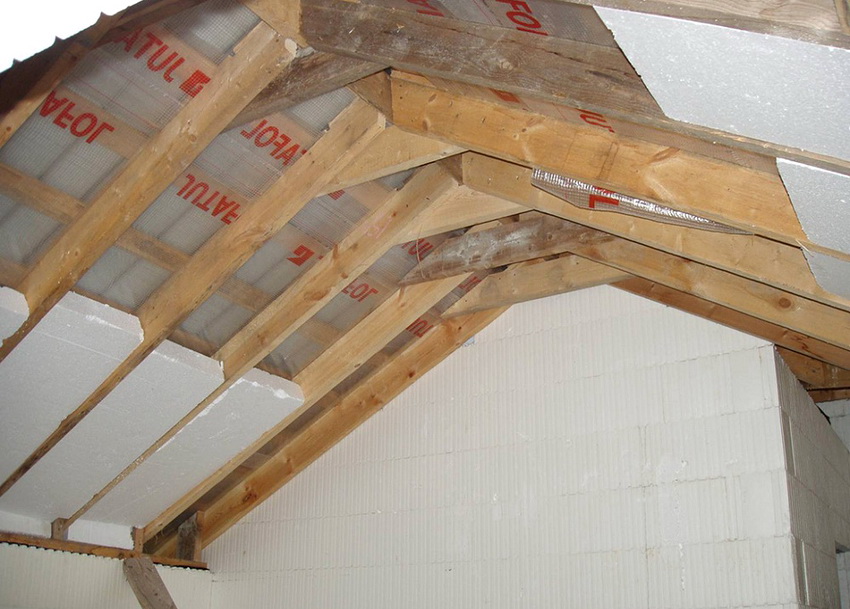
In order for expanded polystyrene (foam) to serve as a heater for a long time, you should adhere to the installation technology
Many believe that the listed disadvantages are more than advantages and that the insulation of the attic with foam is not justified. But it must be admitted that this is one of the most budgetary options, which gives a minimum of trouble, and, subject to the installation technology, it may well become an alternative to more expensive solutions.
Attic insulation with expanded polystyrene: advantages, disadvantages and features
Extruded polystyrene foam is very similar to polystyrene foam. Their technical characteristics are almost identical, with the exception of one significant aspect - installation technology. If the polystyrene needs to be laid between the rafters, then the polystyrene foam is placed on top, which eliminates the risk of cracks and gaps.
Helpful advice! Some manufacturers offer customers slabs with stepped joints, which makes the joints even more durable and reliable.Such fixation of the elements to each other is ideal for insulating the attic roof.
Among other advantages of roof insulation with expanded polystyrene, one cannot fail to note its low weight, which is perfectly combined with high strength and resistance to external influences. In addition, the operational life of this material is quite long, provided that the entire technology of attic insulation with penoplex is observed.
Expanded polystyrene is not prone to decay or decomposition, which is also important when working on the roof. Any top coat can be applied over it to give it an attractive appearance and provide additional protection.
Working with expanded polystyrene on your own is simple: a variety of adhesive mixtures and mastics are suitable for fixing it. And in some cases, even a construction stapler is used. So there is no need to purchase any expensive additional elements for installation.
But behind all these positive characteristics, one must not forget about the only, but rather serious, drawback of insulation with expanded polystyrene from the inside of the walls and roof - the material has an increased level of flammability. For owners, this means the need for a more careful and thoughtful supply of all communications, in particular electricity.
Of course, manufacturers are trying to minimize this drawback, but today we can say with confidence that this issue remains open, and every owner who has made a choice in favor of wall insulation from the inside with penoplex is obliged to take care of his safety.
Interesting! It is no coincidence that this material is most often chosen for insulation of a balcony. Expanded polystyrene has a very low thermal conductivity, and at the same time it practically does not have to contact with electricity on the balcony.
Insulation of the attic from the inside with mineral wool: a worthy alternative to penoplex
Mineral wool is another thermal insulation material that is widely used and widely known for its characteristics. It got its name from its fibrous structure, similar to medical cotton. You can buy it in rolls, which makes transportation and installation even more convenient.
Low thermal conductivity goes well with the ability not to absorb moisture. Although, if this happens, the material dries quickly without losing its appearance and technical characteristics.
Minvata belongs to the category of environmentally friendly and safe materials, which becomes noticeable even if the upper part of the roof is covered with metal tiles, which are prone to strong heating under the influence of sunlight. In addition, mineral wool also serves as a sound-absorbing barrier, and unlike foam, it is not at all of interest to rodents and various insects.
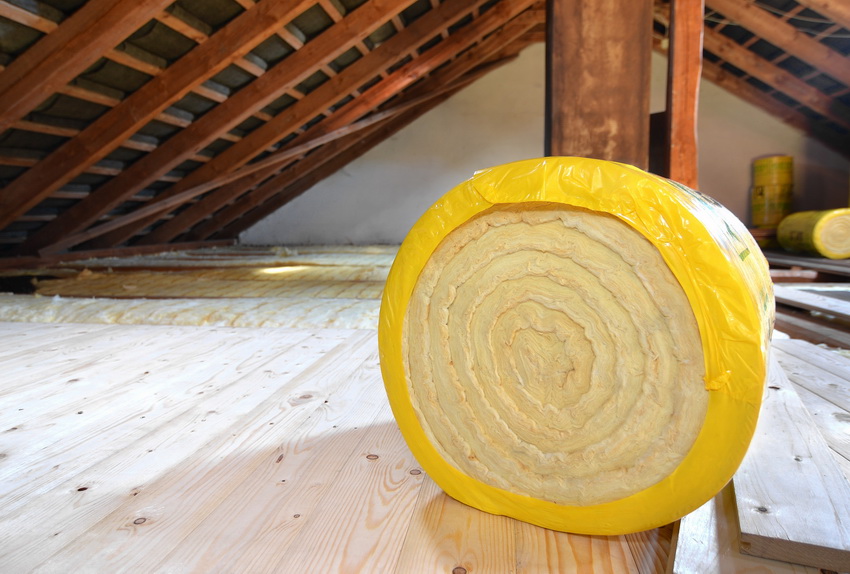
The peculiarities of mineral wool are that it not only retains heat, but also has excellent sound insulation properties.
Insulation of the roof from the inside with mineral wool should be done taking into account the fact that it is a rather elastic material, even despite its soft fibrous structure. It is quite capable of being held between the rafters, subject to quality fixation.
Helpful advice! In the process of cutting mineral wool for laying sheets between the rafters, it is necessary to leave a margin of about 2 cm.This will allow them to be held and not fall out even if there are no additional fasteners.
Insulation of the roof from the inside with glass wool: is it worth using this material
In terms of its characteristics, glass wool is similar to mineral wool, but in this case, the fibers that make up the material are longer, which generally increases the elasticity of the material.The indicators of strength and soundproofing capabilities are also slightly higher. But upon contact with moisture, glass wool is inferior to mineral wool, absorbing more water.
The use of glass wool for insulation of residential premises does not lead to any negative consequences for the health of residents. No toxic substances are used in the production process. In addition, glass wool has a low flammability index.
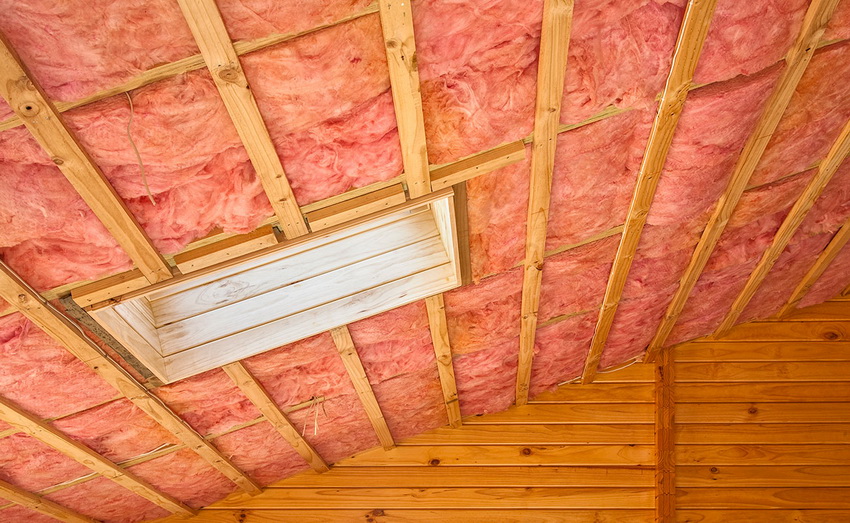
Glass wool is good in terms of fire safety, and also perfectly retains heat and is not susceptible to damage by mold and other influences.
In the process of working with the material, compliance with safety regulations is required to avoid the ingress of glass wool fibers into the air. Its small particles can irritate mucous membranes, and therefore the use of a respirator and goggles is a must.
Helpful advice! Sometimes glass wool fibers can irritate the skin, so it is recommended to wear closed clothing and even gloves when working with it.
Insulation of the attic roof from the inside with your own hands using stone wool
Stone wool is the most expensive option among these materials. But at the same time, it is the safest for human health and, in terms of the degree of reliability, significantly exceeds all other options. Here are some of its main benefits:
- the thermal conductivity coefficient of this material is one of the lowest;
- stone wool remains completely environmentally friendly even when heated;
- the layer of this heat insulator is also an excellent noise-absorbing barrier;
- the level of vapor permeability is very high;
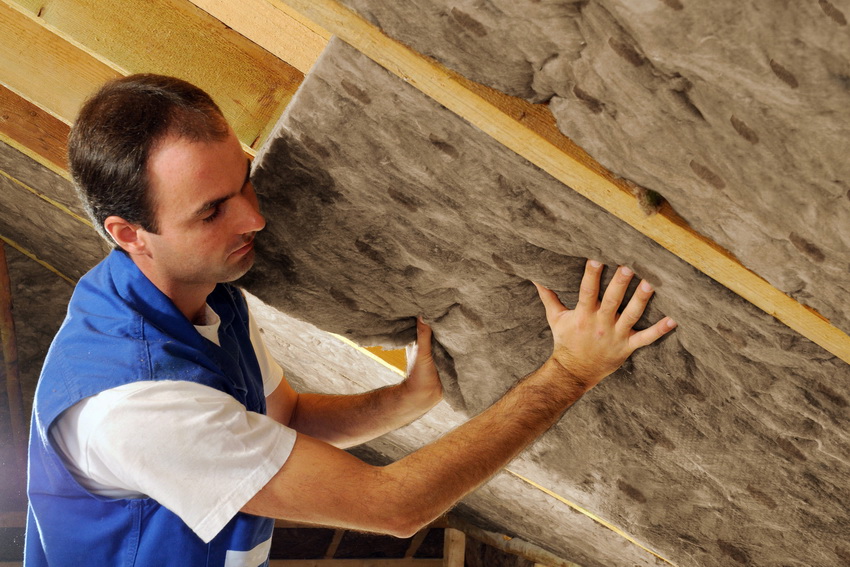
Stone wool is not used so often due to its high cost, but the effectiveness of this material is high in all respects
- the material practically does not burn;
- no mechanical loads are capable of deforming stone wool or affecting its characteristics;
- the material has a long service life;
- stone wool can be purchased in the form of slabs that are easily cut into pieces of the required length and attached to the ceiling surface.
Due to the high cost of stone wool, they often try to replace it with mineral wool or glass wool. But such a replacement cannot be called complete, since this affects the quality of insulation quite seriously. Many users argue that the price of the material is quite justified, and provided that the installation technology is followed, it will very quickly pay off the provoked costs.
Related article:
What insulation is better for the roof of different structures
Types of insulation for roofs and ceilings. Mineral and synthetic roof insulation. Insulation of the attic roof.
In addition, it is quite possible to carry out all the work on the insulation of the attic roof from the inside with your own hands. A video instruction can demonstrate the procedure for carrying out the work, and the recommendations of specialists will help to avoid common mistakes.
Warming the attic with ecowool is one of the most effective ways to combat the cold
Ecowool is a pre-crushed material that is first blown into the cracks, and then, using the same method, a layer is placed between the ceiling and the rafters using a device specially designed for this. This is an expensive procedure, but it allows you to completely eliminate all risks of drafts and ensure the most effective insulation.
Ecowool is 80% completely natural material - paper, the properties of which are very similar to those characteristic of wood. With its natural origin, ecowool reduces the level of heat loss no less effectively than other materials.
One of the components that is part of the ecowool is borax.According to its characteristics, it is an antiseptic of natural origin, which makes it possible to provide wooden roof elements with effective protection against the formation of fungus and mold.
Ecowool is applied in a thin layer, but at the same time it provides a decent level of not only heat, but also noise insulation. The material retains its characteristics even after decades of use. So not too low cost is the only drawback of this material, which is fully justified by its excellent properties.
Attic insulation with polyurethane foam: technology basics and material features
Foamed polyurethane foam is the most modern among all the listed ways to insulate an attic. Its main difference is the complete absence of joints or gaps, which can become a source of cold air. In addition, the operational period of this material is one of the longest, and is up to 30 years.
Foamed polyurethane foam is not subject to shrinkage, even if the wooden roof of the house begins to deform over time. Its solid structure completely eliminates the risk of moisture absorption, which eliminates the need to install an additional vapor barrier layer.
But there are aspects that significantly complicate the process of using polyurethane foam as a roof insulation from the inside. This primarily concerns the application procedure, which requires complex and expensive equipment. Its purchase is almost never justified, so it is usually rented.
Another aspect is the complex application technology, which provides for a certain experience in this area and does not allow beginners to independently cope with the task at hand.
Helpful advice! The ideal option is to invite a team of workers who will come with their own equipment and in just a few hours will make high-quality insulation of the attic of your house.
Insulation of the attic from the inside with your own hands using penofol
Penofol is a kind of foamed polyethylene - a technology that occupies its niche among the methods of modern insulation of walls and houses. Along with high levels of sound insulation, it is worth noting the fact that penofol has a high-quality aluminum coating that can be applied on one or two sides.
Here are some more arguments in favor of using penofol for insulating the attic:
- the material does not pose any threat to human health or the environment;
- its thermal conductivity is extremely low;
- the closed system of air bubbles characteristic of this material serves as an excellent barrier to steam penetration.
This method also does not apply to cheap and requires significant financial investments for the implementation. But, as practice shows, it is better to spend money on high-quality material once and thereby ensure comfortable living conditions for many years to come.
The combination of materials is not at all uncommon. Materials that match their characteristics can be used together for insulation. For example, mineral wool and expanded polystyrene are perfectly combined with each other. The first is laid between the rafters, and the second is placed closer to the edge of the roof. This combination will allow you to achieve the desired effect and significantly save on the purchase of materials.
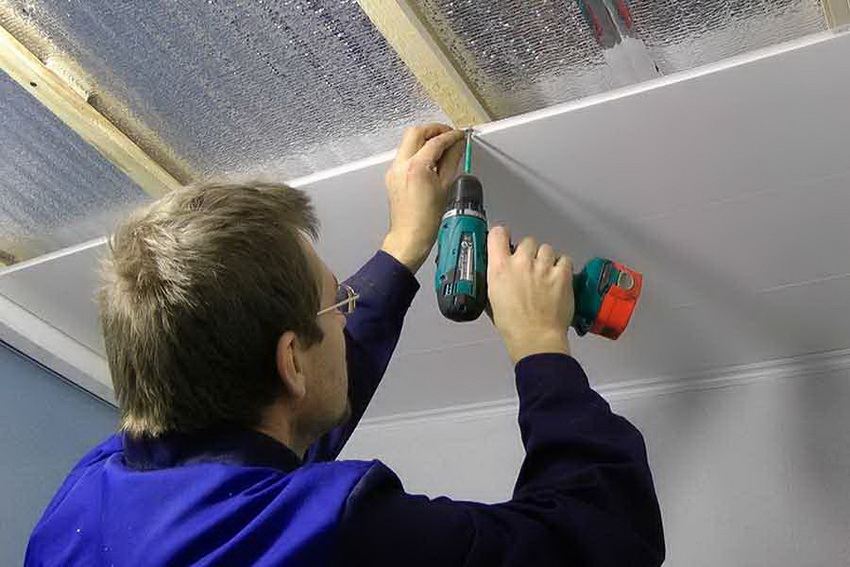
Penofol can provide reliable thermal insulation in combination with other materials
As you can see from the descriptions, each insulation has its own advantages and disadvantages. The only question is to choose the most suitable option that will satisfy the idea of the appropriate price and quality of the material.
One of the most common mistakes that owners make is a thoughtless choice in favor of the cheapest option for insulating the attic. Videos and articles can demonstrate the positive aspects of a particular solution, but it is necessary to choose taking into account all the nuances and characteristics. Attempts to save on heat-insulating material can lead to the fact that after a while of operation, it will be necessary to carry out repair work or even completely replace the entire material.
Do-it-yourself attic insulation from the inside: video and stages of work
Each of the materials has its own characteristics of fastening and should be used exclusively according to the manufacturer's recommendations. But if we talk about the general procedure for carrying out the work, then there are mandatory stages that are carried out almost always, regardless of the material chosen.
First, a layer of waterproofing material is laid out, which should protect the insulation from the destructive effects of moisture. The film is laid with an overlap in such a way that one layer is 10-15 cm on top of the other. The material is fastened with a construction stapler, and the joints are additionally glued with tape.
Then, if necessary, a crate is created. For it, you can use wooden slats, the width of which is 8-10 cm. You need to attach them to the rafters, placing them parallel to each other at a distance of 50-60 cm. It is very important to check each element separately using a building level. This will prevent the occurrence of any roof defects in the future.
A heat insulator is laid on the rafters or crate and fixed in a suitable way for it. For example, if we are talking about the use of any type of cotton wool sold in rolls, then the material is cut into pieces of the desired size in order to lay them between the rafters. In this case, the thickness of the insulation should be such as to match the width of the log. It is especially important if you decide to insulate the walls from the inside with mineral wool plus drywall. In this case, all free space must be filled with insulation.
The top layer of this "pie" is a layer of vapor barrier material, which can be used as a polyethylene film, glassine or roofing felt. As in the case of waterproofing, the selected material is overlapped. True, in this case, it is better to fasten it with thin wooden slats, placing them in increments of 40-50 cm. All joints must be glued with tape.
Helpful advice! If you need to lay several layers of thermal insulation material, a vapor barrier film is required between each of them. This is especially true for cold regions.
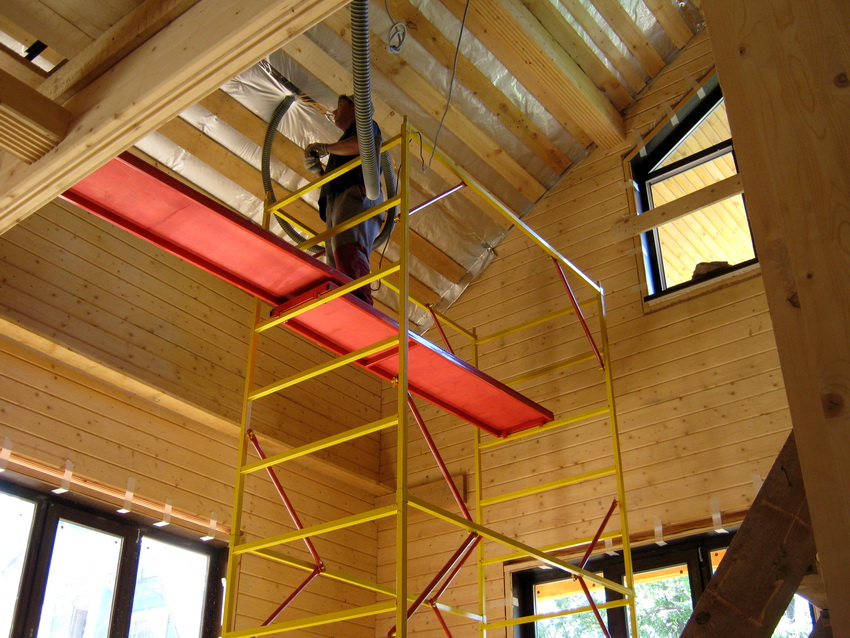
You can significantly save on insulation of the attic if you figure out which materials are better and cheaper
As a final step, it remains only to take care of a suitable finishing coating, which can be attached to the crate or, if there is none, directly to the bars. It is worth taking into account the weight of the decorative panels used, since the installation of the heaviest of them may require preliminary installation of a frame made of a metal profile.
The main mistakes made in the process of warming the attic
The end result of the work that is carried out with your own hands directly depends on how accurately the technology and all the prescribed rules are followed. It is especially worth considering the procedure for laying the waterproofing layer, since materials that are capable of absorbing moisture later dry up, which often causes cold in the room.
Here are some recommendations from experts, using which you can minimize negative consequences:
- if the angle of inclination of the roof does not exceed 13 °, it will delay precipitation on the surface. The result is rust and leaks. All this can negatively affect the condition of the insulation, so it is important to make sure that the angle of inclination is large enough before starting work;
- installation of thermal insulation material on walls and roof is not all the necessary work. It is also necessary to take care of window insulation (according to Swedish technology). To do this, it is best to invite specialists to surely avoid a leak. Especially if you want to install tilted windows;
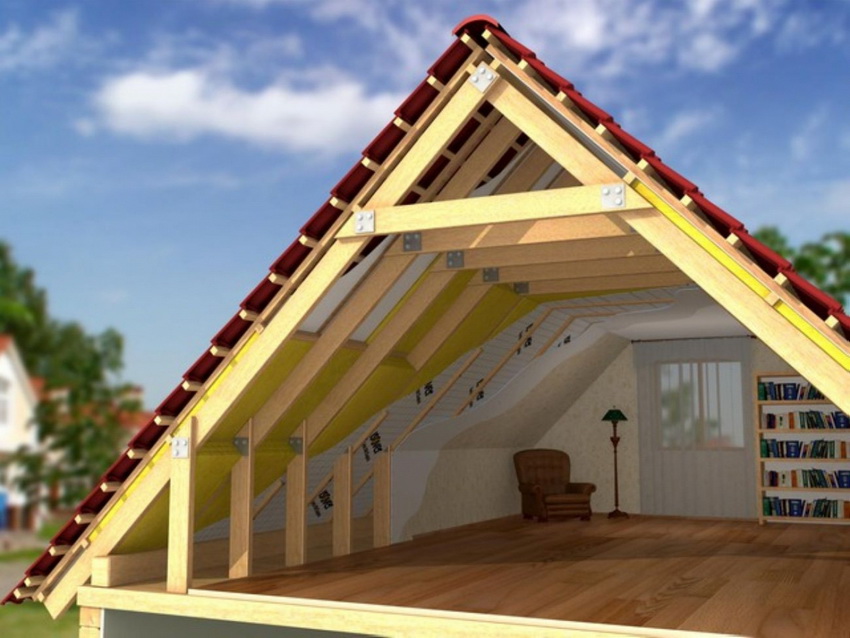
Installation of thermal insulation material on walls and ceiling can be done independently or with the help of specialists
- in order to provide the thermal insulation material with ventilation and the ability to dry out if it gets wet, it is advisable to leave a gap of about 2-3 cm between the material and the roof;
- it is categorically impossible to skip at least one of the necessary layers of vapor or waterproofing materials;
- if the insulation material is thicker than the rafters, then their height can be increased by independently filling additional slats.
These simple recommendations can help in the process of work, significantly improving the quality of insulation. However, if for any reason there are doubts about the strength and experience, it would be better to invite a specialist. Of course, you will have to pay for this, but in this case you will not have to redo everything twice.
Insulating the attic gable from the inside is far from the most difficult task that a home owner may face. Often, on the top floor, the owners want to place a balcony, the insulation technology of which also has its own characteristics.
As well as for walls, a wide variety of materials can be used to insulate the ceiling on the balcony, although it is worth noting that the technology for insulating loggias, which has not been mentioned before, is often used here. The step-by-step instructions "Do-it-yourself balcony insulation from the inside" will help you to understand in detail the features of this process.
Insulation of the attic from the inside with mineral wool with your own hands: video instruction
As an illustrative example, it is recommended to watch a training video, where the technology of wall insulation from the inside with mineral wool is presented in detail. This will allow you to get acquainted in detail with all the nuances and avoid the previously mentioned common mistakes.
